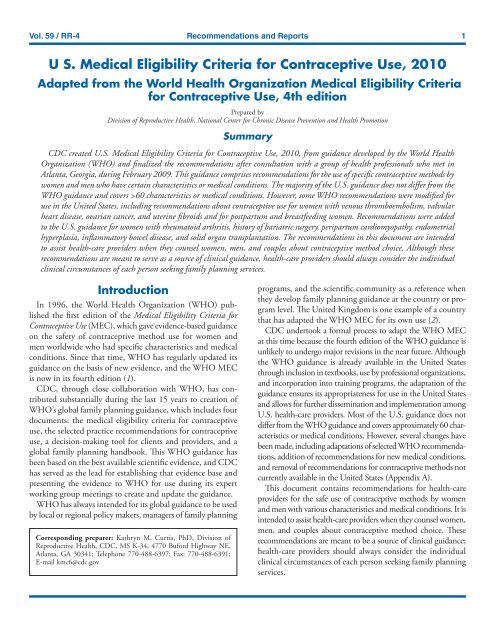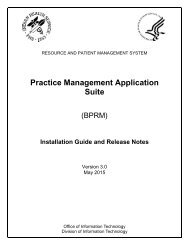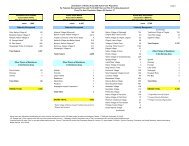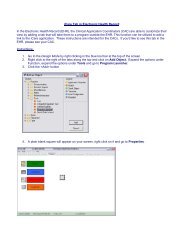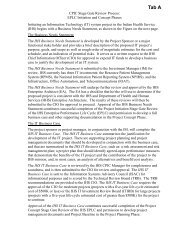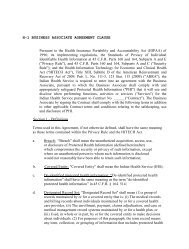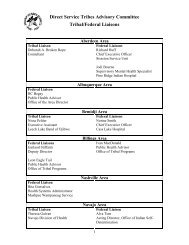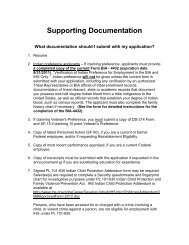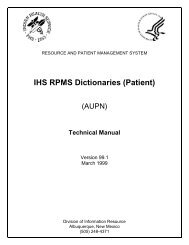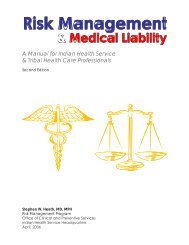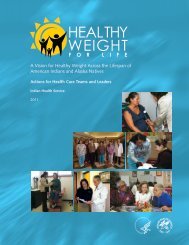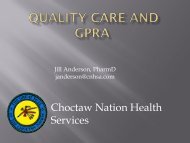CDC Article-US Medical Eligibility Criteria for Contraceptive Use, 2010
CDC Article-US Medical Eligibility Criteria for Contraceptive Use, 2010
CDC Article-US Medical Eligibility Criteria for Contraceptive Use, 2010
Create successful ePaper yourself
Turn your PDF publications into a flip-book with our unique Google optimized e-Paper software.
Vol. 59 / RR-4 Recommendations and Reports 1<br />
U S. <strong>Medical</strong> <strong>Eligibility</strong> <strong>Criteria</strong> <strong>for</strong> <strong>Contraceptive</strong> <strong>Use</strong>, <strong>2010</strong><br />
Adapted from the World Health Organization <strong>Medical</strong> <strong>Eligibility</strong> <strong>Criteria</strong><br />
<strong>for</strong> <strong>Contraceptive</strong> <strong>Use</strong>, 4th edition<br />
Prepared by<br />
Division of Reproductive Health, National Center <strong>for</strong> Chronic Disease Prevention and Health Promotion<br />
Summary<br />
<strong>CDC</strong> created U.S. <strong>Medical</strong> <strong>Eligibility</strong> <strong>Criteria</strong> <strong>for</strong> <strong>Contraceptive</strong> <strong>Use</strong>, <strong>2010</strong>, from guidance developed by the World Health<br />
Organization (WHO) and finalized the recommendations after consultation with a group of health professionals who met in<br />
Atlanta, Georgia, during February 2009. This guidance comprises recommendations <strong>for</strong> the use of specific contraceptive methods by<br />
women and men who have certain characteristics or medical conditions. The majority of the U.S. guidance does not differ from the<br />
WHO guidance and covers >60 characteristics or medical conditions. However, some WHO recommendations were modified <strong>for</strong><br />
use in the United States, including recommendations about contraceptive use <strong>for</strong> women with venous thromboembolism, valvular<br />
heart disease, ovarian cancer, and uterine fibroids and <strong>for</strong> postpartum and breastfeeding women. Recommendations were added<br />
to the U.S. guidance <strong>for</strong> women with rheumatoid arthritis, history of bariatric surgery, peripartum cardiomyopathy, endometrial<br />
hyperplasia, inflammatory bowel disease, and solid organ transplantation. The recommendations in this document are intended<br />
to assist health-care providers when they counsel women, men, and couples about contraceptive method choice. Although these<br />
recommendations are meant to serve as a source of clinical guidance, health-care providers should always consider the individual<br />
clinical circumstances of each person seeking family planning services.<br />
Introduction<br />
In 1996, the World Health Organization (WHO) published<br />
the first edition of the <strong>Medical</strong> <strong>Eligibility</strong> <strong>Criteria</strong> <strong>for</strong><br />
<strong>Contraceptive</strong> <strong>Use</strong> (MEC), which gave evidence-based guidance<br />
on the safety of contraceptive method use <strong>for</strong> women and<br />
men worldwide who had specific characteristics and medical<br />
conditions. Since that time, WHO has regularly updated its<br />
guidance on the basis of new evidence, and the WHO MEC<br />
is now in its fourth edition (1).<br />
<strong>CDC</strong>, through close collaboration with WHO, has contributed<br />
substantially during the last 15 years to creation of<br />
WHO’s global family planning guidance, which includes four<br />
documents: the medical eligibility criteria <strong>for</strong> contraceptive<br />
use, the selected practice recommendations <strong>for</strong> contraceptive<br />
use, a decision-making tool <strong>for</strong> clients and providers, and a<br />
global family planning handbook. This WHO guidance has<br />
been based on the best available scientific evidence, and <strong>CDC</strong><br />
has served as the lead <strong>for</strong> establishing that evidence base and<br />
presenting the evidence to WHO <strong>for</strong> use during its expert<br />
working group meetings to create and update the guidance.<br />
WHO has always intended <strong>for</strong> its global guidance to be used<br />
by local or regional policy makers, managers of family planning<br />
Corresponding preparer: Kathryn M. Curtis, PhD, Division of<br />
Reproductive Health, <strong>CDC</strong>, MS K-34, 4770 Bu<strong>for</strong>d Highway NE,<br />
Atlanta, GA 30341; Telephone 770-488-6397; Fax: 770-488-6391;<br />
E-mail kmc6@cdc.gov<br />
programs, and the scientific community as a reference when<br />
they develop family planning guidance at the country or program<br />
level. The United Kingdom is one example of a country<br />
that has adapted the WHO MEC <strong>for</strong> its own use (2).<br />
<strong>CDC</strong> undertook a <strong>for</strong>mal process to adapt the WHO MEC<br />
at this time because the fourth edition of the WHO guidance is<br />
unlikely to undergo major revisions in the near future. Although<br />
the WHO guidance is already available in the United States<br />
through inclusion in textbooks, use by professional organizations,<br />
and incorporation into training programs, the adaptation of the<br />
guidance ensures its appropriateness <strong>for</strong> use in the United States<br />
and allows <strong>for</strong> further dissemination and implementation among<br />
U.S. health-care providers. Most of the U.S. guidance does not<br />
differ from the WHO guidance and covers approximately 60 characteristics<br />
or medical conditions. However, several changes have<br />
been made, including adaptations of selected WHO recommendations,<br />
addition of recommendations <strong>for</strong> new medical conditions,<br />
and removal of recommendations <strong>for</strong> contraceptive methods not<br />
currently available in the United States (Appendix A).<br />
This document contains recommendations <strong>for</strong> health-care<br />
providers <strong>for</strong> the safe use of contraceptive methods by women<br />
and men with various characteristics and medical conditions. It is<br />
intended to assist health-care providers when they counsel women,<br />
men, and couples about contraceptive method choice. These<br />
recommendations are meant to be a source of clinical guidance;<br />
health-care providers should always consider the individual<br />
clinical circumstances of each person seeking family planning<br />
services.


